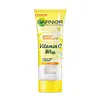What's inside
What's inside
 Key Ingredients
Key Ingredients

 Benefits
Benefits

 Concerns
Concerns

 Ingredients Side-by-side
Ingredients Side-by-side

Water
Skin ConditioningTea-Lauryl Sulfate
CleansingAcrylates Copolymer
Propanediol
SolventCocamidopropyl Betaine
CleansingTriethanolamine
BufferingPPG-2 Hydroxyethyl Coco/Isostearamide
Copernicia Cerifera Wax
Niacinamide
SmoothingGlycerin
HumectantOligopeptide-1
Skin ConditioningResveratrol
AntioxidantCellulose
AbsorbentLactose
HumectantHydroxypropyl Methylcellulose
Emulsion StabilisingHydroxypropyl Cyclodextrin
MaskingCitric Acid
BufferingSodium Chloride
MaskingMethyldihydrojasmonate
MaskingEthylene Brassylate
MaskingEthyl Linalool
MaskingTetramethyl Acetyloctahydronaphthalenes
MaskingIsobutyl Methyl Tetrahydropyranol
MaskingMethylenedioxyphenyl Methylpropanal
PerfumingPhenylisohexanol
MaskingTrimethylbenzenepropanol
MaskingMethyl Benzodioxepinone
MaskingDisodium EDTA
Iodopropynyl Butylcarbamate
PreservativeMagnesium Chloride
Magnesium Nitrate
Methylisothiazolinone
PreservativeMethylchloroisothiazolinone
PreservativeTalc
AbrasiveCI 73360
Cosmetic ColorantUltramarines
Water, Tea-Lauryl Sulfate, Acrylates Copolymer, Propanediol, Cocamidopropyl Betaine, Triethanolamine, PPG-2 Hydroxyethyl Coco/Isostearamide, Copernicia Cerifera Wax, Niacinamide, Glycerin, Oligopeptide-1, Resveratrol, Cellulose, Lactose, Hydroxypropyl Methylcellulose, Hydroxypropyl Cyclodextrin, Citric Acid, Sodium Chloride, Methyldihydrojasmonate, Ethylene Brassylate, Ethyl Linalool, Tetramethyl Acetyloctahydronaphthalenes, Isobutyl Methyl Tetrahydropyranol, Methylenedioxyphenyl Methylpropanal, Phenylisohexanol, Trimethylbenzenepropanol, Methyl Benzodioxepinone, Disodium EDTA, Iodopropynyl Butylcarbamate, Magnesium Chloride, Magnesium Nitrate, Methylisothiazolinone, Methylchloroisothiazolinone, Talc, CI 73360, Ultramarines
 Reviews
Reviews

Ingredients Explained
These ingredients are found in both products.
Ingredients higher up in an ingredient list are typically present in a larger amount.
Chances are, you eat sodium chloride every day. Sodium Chloride is also known as table salt.
This ingredient has many purposes in skincare: thickener, emulsifier, and exfoliator.
You'll most likely find this ingredient in cleansers where it is used to create a gel-like texture. As an emulsifier, it also prevents ingredients from separating.
There is much debate on whether this ingredient is comedogenic. The short answer - comedogenic ratings don't tell the whole story. Learn more about comegodenic ratings here.
The concensus about this ingredient causing acne seems to be divided. Research is needed to understand if this ingredient does cause acne.
Scrubs may use salt as the primary exfoliating ingredient.
Learn more about Sodium ChlorideWater. It's the most common cosmetic ingredient of all. You'll usually see it at the top of ingredient lists, meaning that it makes up the largest part of the product.
So why is it so popular? Water most often acts as a solvent - this means that it helps dissolve other ingredients into the formulation.
You'll also recognize water as that liquid we all need to stay alive. If you see this, drink a glass of water. Stay hydrated!
Learn more about Water